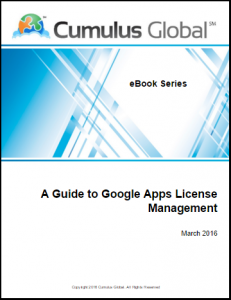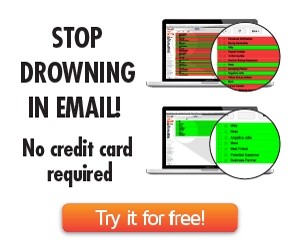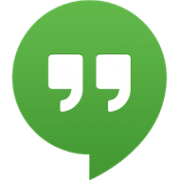
It’s not news that the environment in which your sales team operates is changing dramatically. According to Gartner, customers will soon manage 85% of their relationships without talking to a human; that means your sales team will need to be more efficient with their prospects and be empowered to deliver the right information at the right time.
And they’re not the only ones dealing with changes. CFOs are no longer dealing only with financial reporting, compliance and cost control. According to a study by BI company, Adaptive Insights, “By driving a culture of agile, data-driven decision making throughout a company, CFOs can help create a significant competitive advantage.” CFOs are more plugged into data than ever, and that is pushing entire organizations to adopt managed cloud services, technologies and practices that support this.
Sales teams and their support systems are no different. With all the changes empowered customers are presenting to sales teams, it’s more important than ever to know what tools and techniques will really work to help your sales team operate more productively, spending less time on non-productive administrative functions and more time delivering value and closing deals.
Cloud Sales Enablement
A key focus of discussion in how mid-sized businesses are addressing this change has been sales enablement. It’s widely agreed that sales enablement is constantly evolving, and there’s been plenty written about it to-date with multiple interpretations and definitions of just what it means to organizations. We prefer the definition that spun out of IDC a few years back:
Sales enablement is “getting the right information into the hands of the right sellers at the right time and place, and in the right format, to move a sales opportunity forward.”
So let’s break down sales enablement into its individual components, and see how your sales team might address each aspect by leveraging cloud-based technologies to make them faster, more efficient, and more responsive to your existing—and future—clients’ needs.
Getting the right information to sales members
How often has your salesperson been sitting down with a prospect, and they’ve had to respond to a request with the words, “I don’t have that, but I can get it to you when I get back to my (room, office, house)”? Often, sales people don’t have exactly what they need right when they need it. Perhaps it’s a PDF of a sell sheet they forgot at the last minute. Maybe it’s the contract is MS Word format, and they can’t edit it in the moment. Or, it could be a performance report showing how much more competitive your solution will help your prospect become. Depending on who you talk to, approximately 40% of sales go to the company that responds to your prospect first.
Imagine empowering your sales teams to get the right information in the hands of their prospect—right when they need it.
No need to return to the office and email a document. No need to leave, make a change to a contract, and delay signing (or worse) losing momentum. Better yet—being able to access proprietary and competitive information in the moment it’s needed to close the sale. Having your sales team plugged into and empowered by the cloud can really help them get the right information to those who need it.
With Cloud Solutions, More Team Members Can Collaborate
Who’s to say that your salesperson is the one that’s going to move the next big deal through the next phase of the pipeline? A seller might be a customer service rep who’s helping your existing customer with an issue and has an opportunity to upsell them on your services. Anyone in your organization has an opportunity—given the chance—to sell to new and existing accounts.
In this scenario, having your data and collaboration tools in the cloud allows for a few things:
- Real-time communication. With cloud-based tools and apps, if a customer service rep is on the phone with a customer, they can instant message another employee to help solve a problem or meet a need. Or, imagine for a moment that you’re closing a deal without an engineer on hand to answer a critical question. With cloud-based communication, on-demand video conferencing brings the engineer into your meeting.
- Real-time collaboration. With the ability to upload, store, and access documents in the cloud, multiple users in different locations (or even right next to each other) can now comment and update documents in real time. The ability for a salesperson to update a proposal during a meeting, while project teams are on-hand to review, is a true game changer for many organizations.
- Assisted information and context. Cloud-based solutions allow you to bring all your tools and data together in one place. For example, in a properly implemented Google Workspace or Office 365 cloud solution, you’re able to do a number of things that aren’t possible with on premise solutions:
- With email, you can see your current chain, as well as other recent conversations with that person.
- When you’re searching for material and information on a particular topic (for example, a client or engagement), you’re able to search emails AND documents stored online.
- With cloud integration, you can view social and business content alongside the email you are responding to or the voicemail transcript you are reading, providing context to conversations.
All of these combine to empower sales teams and other employees when they’re in a position of adding value to prospects and existing accounts.
Enable Employees With Access to Documents at any Time
It’s 8:00 AM in Boston, and your top sales team is getting ready to deliver that huge financial pitch over breakfast in the CEO’s conference room. Based on a late night email from the prospective customer, they realize that they need information from another presentation — but it’s 5:00 AM in your Los Angeles office and no one’s home. Fortunately, with the cloud, your team can remotely and securely access your file services, update the document, and be ready to go without batting an eyelash.
Sales Members Can Access Key Info From Any Location
VPN has long been the go to for providing employees remote access to company assets. Everyone has a story about trying to work remotely and having to deal with VPN issues. These go away almost entirely when dealing with the cloud.
With the Proper Format, Cloud Can Drive Sales
We’re all pretty familiar with having our email and calendars on our phones now. But today, we have full editing suites that include document editing, presentation development, and spreadsheet tools available on mobile phones and tablets. The ability to work remotely directly in the environment, with the necessary tools, in the application preferred by a prospect, is invaluable to a sales person. No more looking at a printed page or pdf on your phone and waiting until you get back to the office to make changes. With the cloud, you make critical changes right on the spot.
Sales Cloud Enablement is Key in Modern Business
If your sales team isn’t focusing on moving opportunities to the next stage (closing), then they aren’t being productive. Research by Innoppl Technologies shows that 65% of sales reps who have adopted mobile CRM (cloud-based) have achieved their sales quotas, while only 22% of reps using non-mobile CRM have reached the same targets.
What are key components of the cloud that drive enablement?
Three of the ways that the cloud can enable your sales team:
- Assistive Information: the ability for your salespeople to access related information and context, in real time, while on the phone or responding to emails.
- Mobility: true integration of mobile and remote users into your environment (or, no more VPN!).
- Personal Communication Modes: We operate in a time when 3 or 4 generations of people work on the same team. Preferred communication methods vary wildly. Cloud-based infrastructure communications help bridge the gap between those that prefer face-to-face meetings, phone calls, emails, and texts.
One final bonus for Sales Cloud Enablement
Once you’re in the cloud, the cost of making incremental improvements goes down. There’s no need to invest in expensive software to see if it works with your sales team. You can begin implementing trial versions and adding incremental features to see what sticks and what adds value to your business.
Do you have a sales team that is mobile, but struggling to respond quickly to prospect demands because they’re ultimately tethered to a desk? What opportunities do you see in your organization for mobile solutions? Think it might be time to switch?






